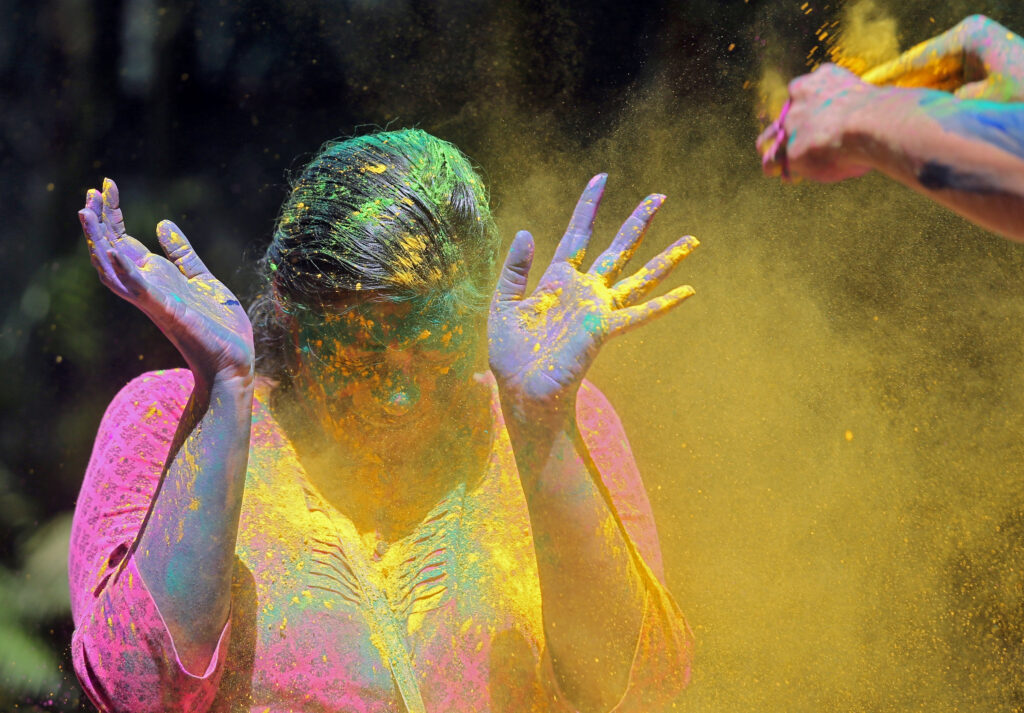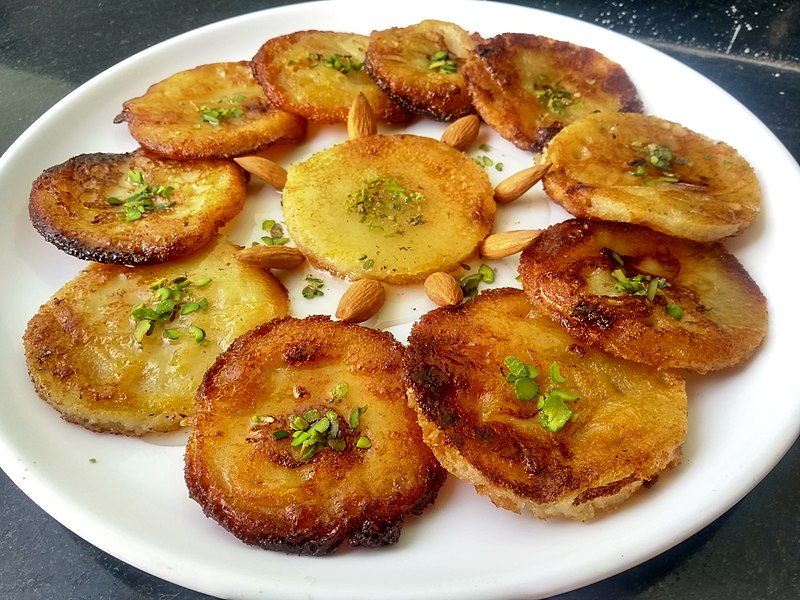Holi, the festival of color, is here once again with splashes of color and warmer weather to remind us that winter is over. With joyful celebrations and special cuisine, Holi festival has become popular all over the world with the spirit of camaraderie that prevails in the festivities.
Holi is celebrated for two days in different cultural traditions in the northern states of India, including Uttar Pradesh, Rajasthan, Gujarat, Maharashtra and West Bengal, and in the neighboring country of Nepal. But the image of Holi in popular mind is from Hindi films, that of a noisy and tipsy group of people drinking ‘Bhang’, a buttermilk sweet drink with almonds and other nuts, and cannabis leaves, dancing and singing and throwing colors.
In Maharashtra and Gujarat, the first day called Holi (or Holika) is a religious festival of the victory of the good over evil. Married women and mothers of young children keep a fast that day, breaking it after praying at the bonfire. The next day called ‘Dhuleti’ is the day to play with colors and water. That is also the day when the family feasts on a festive lunch of special items.
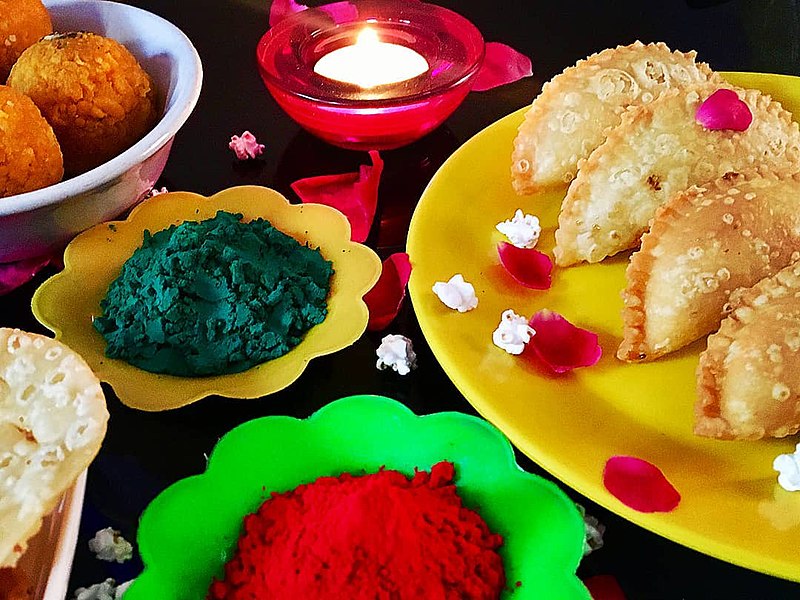 Gujjiya. Photo Courtesy Tasty Tangy @ Creative Commons Attribution-Share Alike 4.0 International license.
Gujjiya. Photo Courtesy Tasty Tangy @ Creative Commons Attribution-Share Alike 4.0 International license.Most families have some special dish, usually a sweet dish, for ‘Dhuleti’. “We Sindhis have a Holi special sweet, huge jalebis with thinner strands and more fermentation. We used to order them from special shops in Mumbai,” Raj Mathrani of Flushing, NY, told Desi Talk.
Minaxi Maniar of Chicago who was born in Ahmedabad and grew up there remembered ‘Lakarshi Laddu’ and ‘Hot Chavanu’ which were special dishes for Holi in her parents’ home. Maniar told Desi Talk she did not know how the laddus were made. After a few phone calls, she found an old grandmother of a friend in Ahmedabad who gave her the recipe, she said. The laddus may sound similar to other besan laddus but were special in that they balanced the real hot and spicy ‘chavanu’, a snack mix
.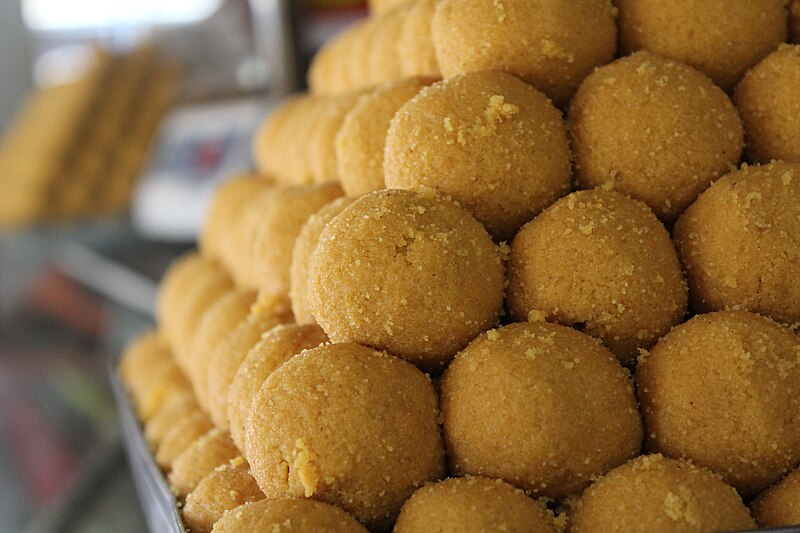 Besan Laddu. Photo Courtesy PJ Wililovesfood @ Creative Commons Attribution-Share Alike 4.0 International license.
Besan Laddu. Photo Courtesy PJ Wililovesfood @ Creative Commons Attribution-Share Alike 4.0 International license.
 Besan Laddu. Photo Courtesy PJ Wililovesfood @ Creative Commons Attribution-Share Alike 4.0 International license.
Besan Laddu. Photo Courtesy PJ Wililovesfood @ Creative Commons Attribution-Share Alike 4.0 International license.Lakarshi Laddu: The historical Lakarshi laddus are made with few ingredients: 1 measure each of coarse besan, ghee and sugar; and a half measure of ‘Mawa’ or khoya.
Other ingredients include a few nuts sliced thinly and raisins, all roasted in a little ghee taken from the half measure.
A pinch of saffron and powder of cardamom seeds are also in the ingredients list.
- First, before lighting the stove, a tablespoon of the ghee is added to the coarse besan flour and mixed thoroughly.
- The ‘mawa’ is crumbled properly and set aside.
- A simple syrup of 1 and a half consistency (taar) is made and kept aside to cool to lukewarm temperature after adding a few drops of lemon juice.
- Then, the besan to which ghee is added is roasted on very low fire in the remaining ghee, stirring constantly, till it feels light, and becomes aromatic and slightly pink.
- At this stage, the ‘mawa’ is added slowly, stirring all the time, and mixed properly into the besan. Both are roasted a little more till the mixture is dry and deep pink.
- The sliced nuts and raisings are added now. The mixture is then taken off the stove and allowed to cool a little.
- The cooled sugar syrup is added and mixed with the flour mixture when it can be touched by hands without burning.
- Little laddus are formed from this mix.
Lakarshi laddus are served on a mound of ‘hot chavanu’ in each plate.
In West Bengal, Holi is known as Dol Jatra where the celebrations are religious and cultural and are interspersed with select sweet dishes to mark the occasion. An authentic recipe of Bengali Mishti Pulao was provided to Desi Talk by Professor Meeta Chatterjee on a visit to Seattle.
The custom of adding salt to sweet dishes while baking is common in the U.S. and chocolate drinks and bars with chili powder and salt have become popular. However, Indian sweets do not generally combine such elements. But the traditional Mishti Pulao combines many unusual items.
Mishti Pulao : Mishti Pulao is made with 5 parts of aged rice, 1 part of Bengali ghee which is brown and grainy.
A tablespoon of raisins, 2 tablespoons of cashews, sugar to taste, salt to taste, a large piece of fresh ginger, and 4-5 green chilies (not the very hot variety), 5-6 small whole cardamoms, a small piece of cinnamon, 1 bay leaf, and 5-6 cloves are other ingredients.
- First, the rice is washed thoroughly, drained and dried.
- Then the entire ghee, except a tablespoon, is added to the rice. Also are added the cardamom, cinnamon, cloves, finely chopped ginger, the bay leaf, and a pinch of turmeric powder for color. Everything is mixed well and the raw rice is then set aside to marinate for an hour.
- An hour later, plenty of water is boiled on one stove, while on another, the cashews are roasted first in the reserved spoonful of ghee and then the rice mix is added to the same pan. Both are roasted on low fire for a long time till the rice acquires a different color. The raisins are added at this point and allowed to fluff up.
- Boiling water is added to the rice now, making sure it is a little less than double the measure of rice. Then salt is added, letting the rice cook covered for about ten minutes.
- Once the rice is cooked al dente, the sugar is added along with slit green chilies, mixing everything carefully not to break the rice.
- The rice is covered again and cooked till the sugar dissolves and any water from it evaporates.
Mishti Pulao is allowed to stand for as long as possible before serving.
Holi in Vraj is a treat, with special khoya gujiya made along with aloo tikki chaat. Holi is celebrated in a very special manner in Vaishnav Havelis, including the Shreenathji Haveli in Nathdwara. A typical dish of the havelis is made of roasted wheat, brown chana and sorghum ground to a coarse powder, formed into laddus by adding jaggery syrup and ghee, very similar to Gujarati ‘Kuler’ prasad made from grey millet flour.
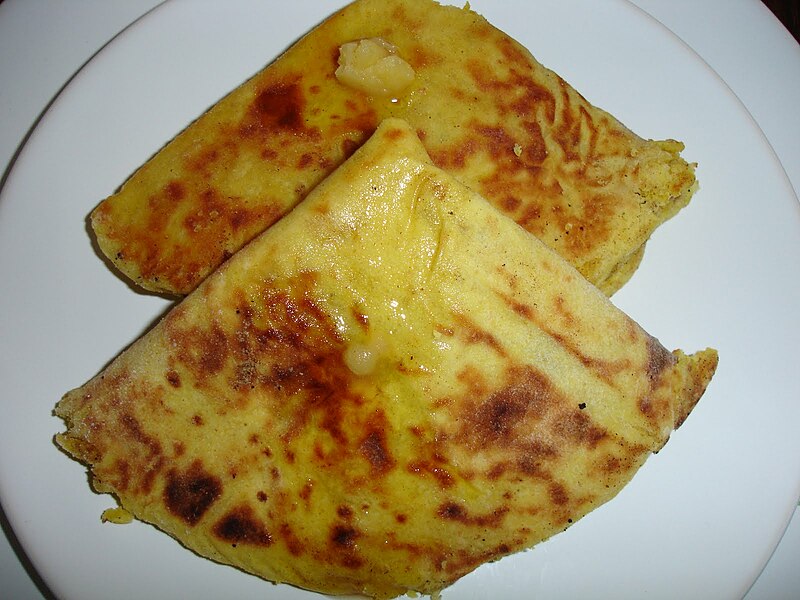 Poran Poli. Photo Courtesy Heena78624 @ Creative Commons Attribution-Share Alike 4.0 International license.
Poran Poli. Photo Courtesy Heena78624 @ Creative Commons Attribution-Share Alike 4.0 International license.Poran Poli: Poran Poli is a dish the Maharashtrians enjoy on every special occasion. The Maharashtrian Poran Poli is different. It is made with ‘chana dal’ or split chickpeas and jaggery, unlike the Gujarati Poran Poli which is made with ‘tuver dal’ or split pidgeon peas and sugar.
The chana dal is first boiled and drained, mixed with jaggery and cooked until firm. If ready to experiment, one can add freshly grated coconut and powdered nuts to the semi soft poran and then make balls which are then stuffed inside chapatti batter, rolled out and cooked in a pan with oil or ghee brushed onto them. A variety of Poran Poli is made with fig poran.
Malpua Photo Courtesy Patelaahil @ Creative Commons Attribution-Share Alike 4.0 International license.
‘Malpua’: Malpua is a dish made out of all purpose flour deep fried in ghee first and then dipped in sugar syrup. Although authentic, the method may not appeal to the health conscious, who could instead use buttermilk pancake flour, add ricotta cheese to the batter and shallow fry the Malpuas creating a newer version.Tastes of Holi: Colorful mithaees for the Festival of Color
Categories: Enjoy,
Festival,
India

